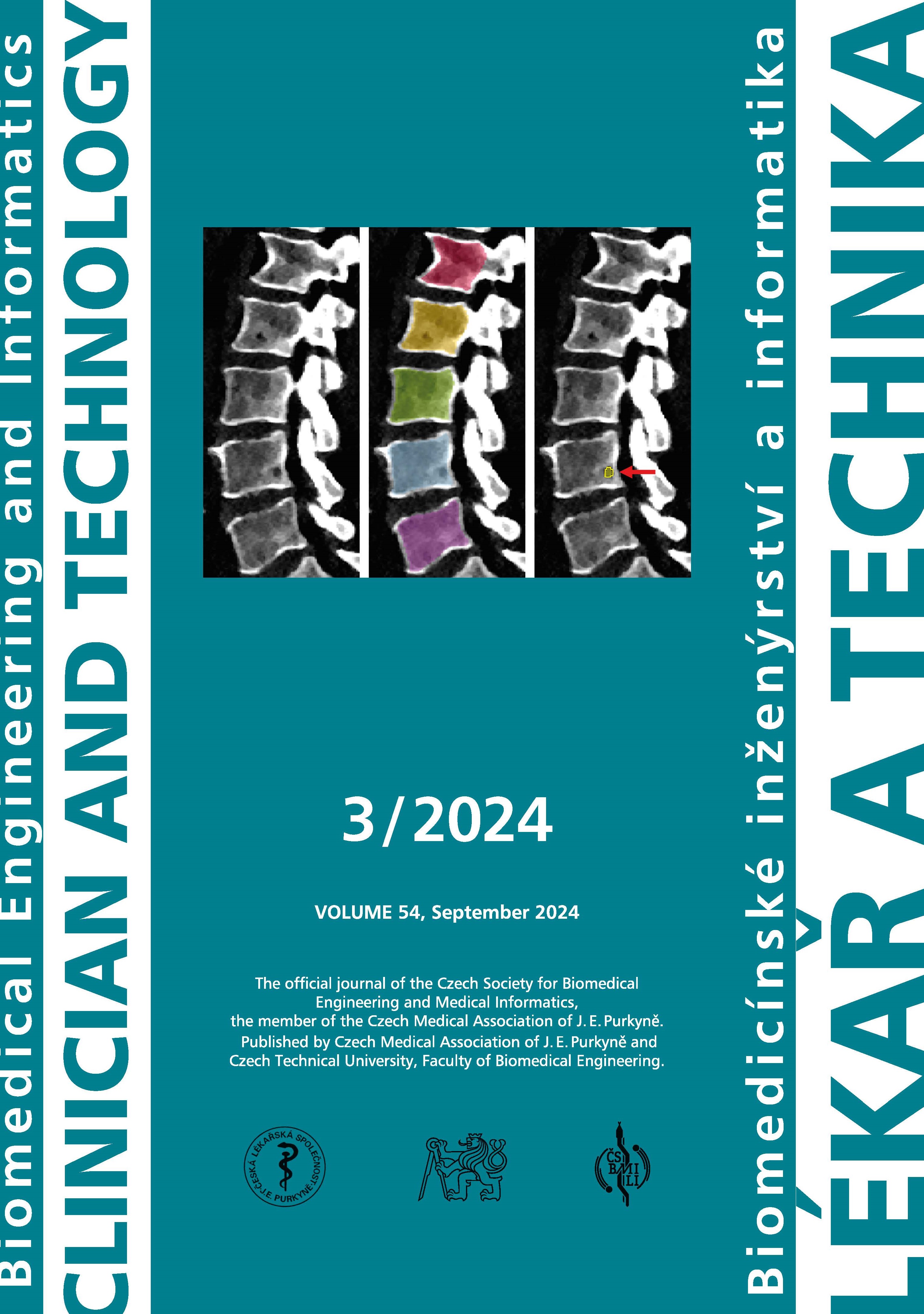EFFECT OF ELECTRODE BELT USED FOR LUNG MONITORING WITH ELECTRICAL IMPEDANCE TOMOGRAPHY ON TIDAL VOLUME IN HEALTHY SUBJECTS
DOI:
https://doi.org/10.14311/CTJ.2024.3.01Abstract
Electrical impedance tomography is a radiation free, non-invasive lung monitoring method that is increasingly coming to the forefront of the interest of researchers and clinicians. The most frequently used EIT system PulmoVista 500 (Dräger Medical, Germany) uses stiff silicone electrode belt that is applied around the patient’s thorax to monitor the distribution of ventilation. To achieve proper electrode-skin connection and obtain high-quality signal, the electrode belt needs to be placed tightly at the level of 4th to 6th intercostal space. There is a possibility that tightly placed belt affects the compliance of the chest wall, tidal volume, and respiratory effort of the patient. In this study, we monitored tidal volumes using spirometer in 10 healthy, spontaneously breathing volunteers with and without the electrode belt applied around the thorax. Potentially clinically significant, but not statistically significant changes occurred in 70% of the subjects during calm breathing and in 90% of the subjects during forced breathing. The study did not determine whether the use of the electrode belt increases or decreases the value of tidal volume. However, when monitoring lung ventilation with EIT system, the possible influence of the stiff electrode belt on chest wall compliance and tidal volumes should be considered.
Downloads
Published
Issue
Section
License
Copyright (c) 2024 Kristyna Koldova, Tereza Blažková

This work is licensed under a Creative Commons Attribution 4.0 International License.
Authors who publish with this journal agree to the following terms:
- Authors retain copyright and grant the journal right of the first publication with the work simultaneously licensed under a Creative Commons Attribution License (https://creativecommons.org/licenses/by/4.0/) that allows others to share the work with an acknowledgment of the work's authorship and initial publication in CTJ.
- Authors are able to enter into separate, additional contractual arrangements for the non-exclusive distribution of the journal’s published version of the work (e.g., post it to an institutional repository or publish it in a book), with an acknowledgment of its initial publication in this journal.
- Authors are permitted and encouraged to post their work online (e.g., in institutional repositories or on their website or ResearchGate) prior to and during the submission process, as it can lead to productive exchanges.
CTJ requires that all of the content of the manuscript has been created by its respective authors or that permission to use a copyrighted material has been obtained by the authors before submitting the manuscript to CTJ. CTJ requires that authors have not used any copyrighted material illegally, as for example a picture from another journal or book, a photo, etc. It is the author’s responsibility to use only materials not violating the copyright law. When in doubt, CTJ may ask the authors to supply the pertinent permission or agreement about the use of a copyrighted material.
The opinions expressed in CTJ articles are those of authors and do not necessarily reflect the views of the publishers or the Czech Society for Biomedical Engineering and Medical Informatics.


